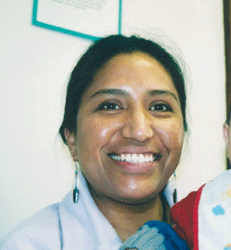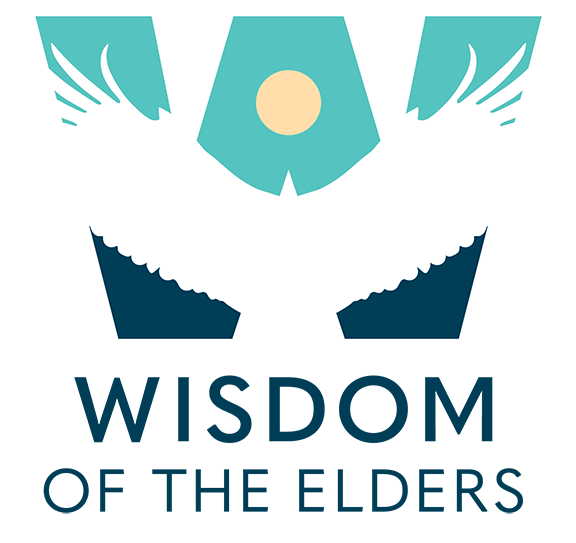Anne White Hat (Teton)
O mitakuwiyape, cante waste na pecuzape. Ohitika Winmiye.
My name is Anne White Hat, and I come from Rosebud, South Dakota. Our family comes from my mother’s side, the Mato Ahuncika family and we’re also part of the Aske Tiospaye. That is in the Rosebud Reservation area.
 We went out and gathered with a group of women and community members from Rosebud. What we did was create a place for community members who were interested to come and learn a little bit, but more importantly to share knowledge that they have. Our project is really based on the fact that the knowledge is within our communities. What we’re trying to do is create a place for people to come and share that knowledge.
We went out and gathered with a group of women and community members from Rosebud. What we did was create a place for community members who were interested to come and learn a little bit, but more importantly to share knowledge that they have. Our project is really based on the fact that the knowledge is within our communities. What we’re trying to do is create a place for people to come and share that knowledge.
We started a project and the idea for this work really came about in the early ’90’s when we were talking with community women about our herbal tradition and what that was like and just asking questions wanting to know more about practical, very practical applications for medicinal herbs and plants because we understand that
We were at one time a healthy and vital nation that didn’t rely on a government-sponsored health care system. We were able to take care of ourselves and we had a very strong relationship with the plant nation. What we were asking was what happened to that relationship and where can we find this information? Since that time we had started doing our own education and trying to find mentors here and there. One of the women said, “Why don’t we learn from our elders rather than leaving our own communities and going to a university to learn about plants and herbs. Why don’t we ask our own elders what that knowledge is and learn from our own people? That’s what we started doing.
In 2000 I was a part of a leadership program with a national indigenous women’s organization called the Indigenous Women’s Network. Based on a leadership program we’re able to start a community-based project. I went into the leadership program with this specific work in mind.
We started a series of workshops and really, just like I said, creating that space for, and inviting people to come and, not only learn a little bit but more importantly, to share because we know that they have this knowledge in their families. This was a place that was safe for them to come and share this information. We brought in indigenous healers from as far away as southern Mexico and some right from our own communities. We always had people in our community that we brought in for our workshops to present that local knowledge and recognize that we have that knowledge in our communities to share. We brought in these folks and said, ” Here are some possibilities for our community. Here are some models that are working in other indigenous communities and this is what’s possible for us.”
I was able to travel to Cuba in 1998 and study their health care system. I was really impressed with how they’ve been able to incorporate their plant medicines into their national health care system. Thirty percent of their medicine comes from plants. That was a model that I thought was really interesting and something that we could replicate parts of.
We use Echinacea. The strongest Echinacea in the world grows here in our own backyard. Naturally, that’s something that we use. I use that with my family and our children. We harvest our own. We make our own medicine for our family and as I said, it’s really practical.
We understand that there’re medicine men and that have the healing that they do and the relationship that they have with their plants. We understand and we respect that very much. But we also understand that there’s also the practical side of keeping your family healthy with natural ways of healing. That’s what we’re really concerned with.
We’ve been really successful. When our project started it was called the Sicangu Way of Life Project. Now as part of this project we have our herbal cooperative, which we call the Sicangu Lakota Herbal Cooperative. The idea is to provide workshops for our community members to come and learn how to make, for instance, herbal cough syrup. Maybe we’ll do the harvesting and plant identification at another workshop. The idea is to really teach hands-on applications, how to make these remedies and how people can do this in their own kitchen with plants that are identifiable in our own communities. At the same time, they’ll help us make a big batch that we can then market for sale. The funds go back into our project to further our work.
We found after we did our first series of workshops, our first year, was that people were coming to us at our houses and calling us and asking us for these remedies. We just have a little bit for our family. We found that there was an interest. People were really interested. We’re like most reservation communities located in very rural areas. It’s a two-and-a-half-hour drive for people to come to the nearest city or the health food store and be able to purchase any of these products, right? We wanted to provide a healthy alternative to going to the Indian Health Service.
